MIRES AND PEATLANDS
MIRES
A peatland where peat is currently being formed and accumulating.



PEATLAND
An area with or without vegetation with a naturally accumulated peat layer (at least 30 cm) at the surface.
Peatlands include:
-
intact and restored mires;
-
areas with remaining peat layer which are drained and used for agriculture, forestry and other activities, where peat decomposition and peat layer loss occur;
-
peat harvesting (abandoned and operating) sites.



PEAT
Sedentarily accumulated material consisting of at least 30 % (dry weight) of dead organic material, which mostly formed form the plants


PEATLAND VEGETATION
Plants which can grow in humid oxygen-free environment and form the peat layer from their dead parts.
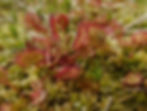
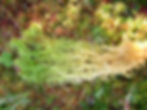
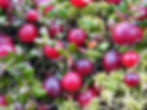

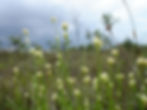
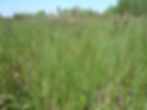
Peatland types
Fens
About 2/3 of Lithuanian peatlands are fens, common in the edges of lakes and raised bogs, river valleys, inter-hill valleys. The surface is usually smooth or concave. The vegetation is fed by the inflowing ground and surface waters, which are rich in minerals and organic matter. In the herb layer various species of sedges dominates. Plants of orchid family can also be found.



Transitional mires
Mire with properties between a rich fen and a bog and characterized by medium nutrient availability.



Raised bogs
Peatland with its surface and water level clearly raised above that of the surrounding and receives water and nutrients from the atmosphere only. The peat of bogs is usually very acidic, poor in nutrients and oxygen. Therefore, only some of the plant species adapted to grow in such a harsh conditions. Moss layer is dominated by various Sphagnums species. Cottongrass, white beak-sedge, cranberries, bog-rosemary, sundew and dwarf forms of scot pines are quite common.



HABITATS OF EUROPEAN IMPORTANCE IN LITHUANIA
There are 53 types habitats of European importance in Lithuania, 11 of these are related to peatland ecosystems:
3160 Natural dystrophic lakes and ponds
7110 *Active raised bog
7120 Degraded raised bog still capable of natural regeneration
7140 Transition mires and quaking bogs
7150 Depressions on peat substrates of the Rhynchosporion
7160 Fennoscandian mineral-rich springs and springfens
7210 *Calcareous fens with Cladium mariscus and species of the Caricion davallianae
7220 *Petrifying springs with tufa formation (Cratoneurion)
7230 Alcaline fens
9080 *Fennoscandian deciduous swamp woods
91D0 *Bog woodland
THE IMPORTANCE OF PEATLANDS

THREATS
The status of Europe's wetlands and peatlands is closely related to historical events, technical progress, human activities and land use (agriculture, forestry, development of peat extraction and urbanization), which intensified particularly in the 19th and 20th centuries.
The most important threats to Lithuanian wetlands and peatlands:
-
drainage and changes in the hydrological regime;
1. traditional agriculture (mostly in fen peatland soils);
2. forestry (mostly in raised bogs);
3. peat mining (usually in raised bogs);
4.urban and infrastructure development;
-
inadequate legal regulation;
-
climate change;
-
fires;
-
environmental pollution;
-
extraction of sapropel or other natural resources in peatlands or neighboring areas;
-
too intense recreation;
-
illegal entertainment;
-
irresponsible behavior in nature;
-
excessive collection and hunting of medicinal plants, berries and mushrooms.



These threats, individually or in combination, negatively affect wetland and peatland ecosystems and their viability.
Over time, this kind of attitude to wetland ecosystems has caused many problems:
-
loss of valuable natural habitats and biodiversity;
-
peat decomposition and greenhouse gas (GHG) emissions;
-
peat soil degradation, yield loss and soil surface compaction, soil erosion;
-
increase of nutrient loads (especially nitrogen compounds) into inland waters and their eutrophication;
-
difficulties in land management and use;
-
increased risk of floods;
-
increased risk of peatland fires;
-
the loss of the historical peat archive, and so on.
STATUS AND PROTECTION OF LITHUANIAN PEATLANDS
Wetlands and peatlands cover almost 10% of the area of present-day Lithuania. Although the first major drainage works on peatlands and wet areas began in the 19th century in the middle of the 20th century, when the southwestern outskirts of Didžioji Tyrulis (Radviliškis district) were drained, and intensive drainage of peatlands began only in the 20th century. In the 1960s, however, about three-quarters of all former wetlands, wet and marshy meadows, and wetland forests have been destroyed or severely damaged to this day. As many as 55% of the country's drained peatlands are now used for agriculture, 34% for forestry and about 3% for peat extraction (exploited and abandoned quarries).
RESTORATION
Restoration of peatlands is important for:
-
conservation of biodiversity;
-
climate change mitigation;
-
formation of local climatic conditions;
-
water quality improvement;
-
prevention of soil erosion and decomposition;
-
provision of renewable natural resources (not peat), which can be used in energy, construction, pharmacy, fodder sectors, etc.;
-
recreation, aesthetic, healthcare and scientific issues.
